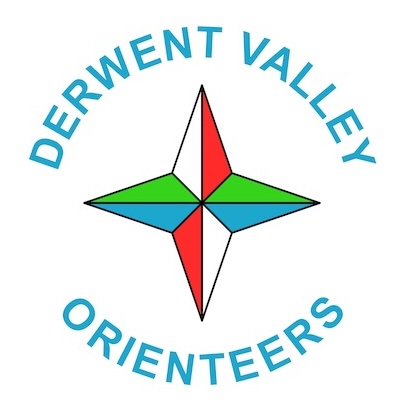Draft One
Derwent Valley Orienteers supports the principles contained within the British Orienteering ‘O-Safe’ document pages 19-23. Organisers of larger events and regular photographers within the Club should be aware of the comprehensive guidance provided in that document
General Principles
Spectators like to take photographs both of event arenas and of competitors, some runners like to video their races, while coaches may find photography useful during training. Appropriate good quality photography enhances the sport and should be encouraged. However, the use of photos and videos on websites and social media, and in posters, the press or other publications, can pose direct and indirect risks to children and young people if not managed correctly.
Members of the public are entitled to take photos in public areas, whether or not this includes taking images of children involved in events or activities. Regardless of any specific policy governing photography by those attending an event, organisers have no right to impose special rules on other members of the public using the same bit of publicly accessible land, including public rights of way through privately-owned land.
However, if there are any concerns that an individual may be taking images of juniors that are inappropriate or illegal, they should immediately be reported to the Event Organizer or one of the Club Safeguarding officers, who have a responsibility to investigate the situation and if necessary contact the police.
Appropriateness of images
Sporting photography should typically demonstrate competitors actively enjoying themselves. Photographs that include anxiety, injury, people changing, or taken in areas around toilet facilities may be deemed inappropriate or intrusive, especially if posted on public media. Particular care is needed when photographing juniors, as youngsters may be very sensitive about their appearance and how they look on social media. There are rare circumstances where it is important that individuals maintain their privacy and they must not be photographed.
The Taking of Images
Parents, guardians or carers who have a reason to be sensitive about the children they are responsible for are advised to discuss with their club and the organisers of any event they are attending, the arrangements for photography or videoing. If the club or organiser is unable to provide the assurance the parent, guardian or carer requires, an informed decision can be made about whether to attend the event or not.
Responsibility of all club members
- People involved in orienteering are encouraged to report any concerns they may have about anyone’s behaviour in this context to the National Office.
- A club volunteer must challenge any individual identified as taking inappropriate photographs at the event. Approach the person and ask who they are, inform them of your concern and ask to see the photographs taken. If they refuse to do so, notify them that they will be reported to the Police. All such concerns must be recorded in the same manner as any other incident or child protection concern and reported to the event organiser who will inform the Club Welfare Officer (Sue Russell). Any serious concern should be reported to the police.
Consent
Photographers – and organisers of an event where a professional or designated photographer will attend – should seek parents’ consent to take and use close-up images of individual or small groups of juniors, but must be cautious when photographing at Schools events attended by families and children who may not be regular orienteers. If the photograph of a junior is to be included in a newsletter or website posting, then their parents and the junior themselves should understand how, where, and in what context that image is going to be used.
When parental consent is not given
Organisers have a responsibility to put in place arrangements to ensure that official or professional photographers can identify anyone whose photograph should not be saved or posted on the Internet. This might involve providing the competitor with a recognisable running number, badge, sticker or wristband.
Responsibilities of Event Organiser
Event organisers should provide guidance to all spectators, members of the public and competitors about any specific areas where photography is not permitted under any circumstances (for example toilets).
1. If there are no restrictions on photography, include the following paragraph in the
Final Details:
“You are welcome to take photographs or record video at this event, but please respect people’s privacy and avoid photography close to first-aid and toilet facilities, or in areas where runners are changing. Photographs may be posted on the internet. If there are particular reasons why an individual should not be photographed, please discuss the issue with the organiser in advance of the event. Report any concerns about inappropriate photography to the event organiser.”
2. Where there are restrictions on photography, when an event is held in an area where the landowner (military, school or council) places restrictions on photography for security or safeguarding reasons, the event organiser must instead state in the Final Details:
“In order to obtain permission to use this area, DVO agreed that photography would not be permitted at this event. Please do not take photographs. You will not be allowed to begin the race if you are carrying image-recording equipment.”
British Orienteering rules state that an organizer may prevent a competitor starting a race if they are wearing or carrying photographic equipment in contravention of the event requirements.
Official Photographers
- If an official photographer (professional or amateur) is to attend an event, this information should be included in the final details, ideally with information about where the photographs will be posted if this is not on the DVO website.
- If the photographer is not a Club member, check the photographer’s identity and the purpose/use of the images to be taken; issue the photographer with identification, which must be worn at all times.
- Provide the photographer with a clear brief about what is considered appropriate in terms of image content.
- Clarify issues about ownership of and access to all images, and for how long they will be retained and/or used.
Use of images of children
- Think carefully before using any images showing children and young people on your website, social media, or in your publications.
- Establish the type of images that present the activity in a positive light, and promote the best aspects of orienteering.
- Photographs of young participants enjoying themselves are good for the sport; parents and children usually welcome an opportunity to celebrate their achievements. However, it is good practice to avoid supplying the full name(s) of the child or children along with the image(s), unless this is considered necessary, is in the child’s best interests, and the child and parent have both consented. The British Orienteering policy provides additional information regarding elite athletes who are more likely to receive widespread personal publicity.
- Avoid using images showing the full face and body of a child; avoid images and camera angles that may be more prone to misinterpretation or misuse than others.
- Coaches who wish to use images of young athletes for development purposes should be aware of the guidance in O-Safe and are required to comply with: consents, retention, safe storage, confidentiality, and use.
Safeguarding
This photographic policy should be read in conjunction with the current DVO Safeguarding Policy. Should the behaviour of any individual within the Club give rise to concern, the matter should be reported to one of the Club Safeguarding officers or the DVO Committee.
Date adopted April 2018
Review Date April 2023


